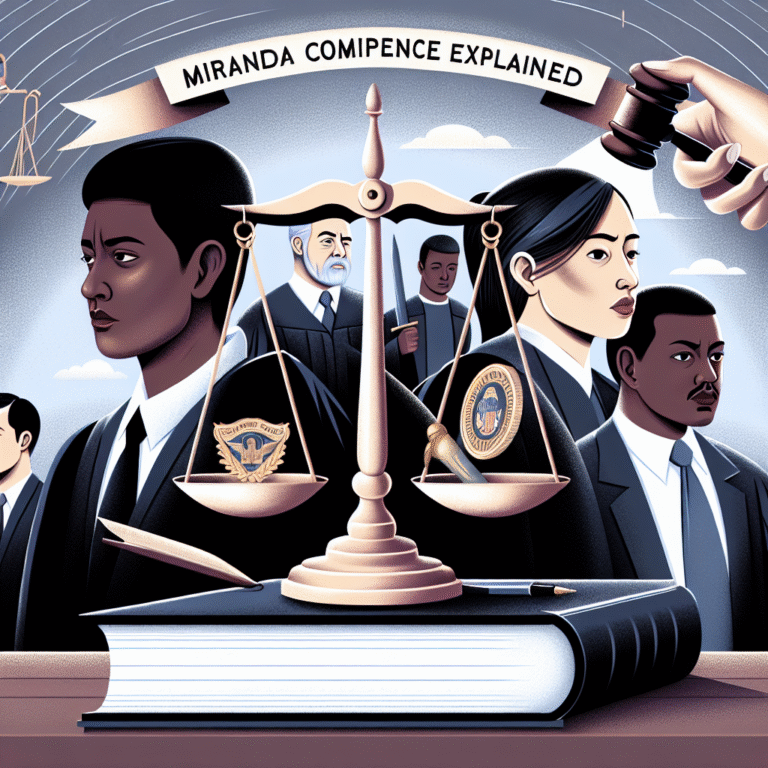
Introduction
In today’s world, the safety and well-being of children are paramount. Every day, cases of child abuse and maltreatment come to light, often leaving devastating effects on the innocent lives involved. In these heart-wrenching situations, the complexity of gathering truthful information from a child can be incredibly challenging. This is where the crucial practice of forensic interviewing comes into play. The Role of Forensic Interviewing in Child Protection Cases is not just procedural; it can be a lifeline that shapes the outcome of investigations and, ultimately, the lives of children in peril.
Forensic interviewing is a specialized technique designed to elicit reliable information from individuals, particularly children, in a way that minimizes distress and maximizes the accuracy of their statements. Understanding the role of forensic interviewing in child protection cases could make a significant difference—both in securing justice for the victim and ensuring that they are provided with the support they need to heal.
In this article, we will delve into the nuances and intricacies of forensic interviewing, illustrated with real-world case studies, and offer valuable insights into its critical role in child protection.
Understanding Forensic Interviewing
What is Forensic Interviewing?
Forensic interviewing is a structured process that involves gathering evidence through conversation, where the interviewer is trained to ask questions in a way that is age-appropriate and psychologically sensitive. The ultimate goal is to obtain accurate, reliable information while mitigating the potential trauma for the child. This approach is essential, as children may have difficulty articulating their experiences, especially in high-stress situations.
Why is It Important?
The Role of Forensic Interviewing in Child Protection Cases cannot be overstated. It serves multiple functions:
- Capturing Accurate Testimony: Forensic interviewing strives to document a child’s account in a manner that preserves its integrity.
- Reducing Trauma: The process aims to minimize the emotional burden on the child through a supportive atmosphere.
- Legal Purposes: The information collected can be critical for investigations and legal proceedings.
- Guiding Treatment: Accurate insights help caregivers and mental health professionals tailor appropriate interventions.
The Forensic Interviewing Process
1. Preparation and Building Rapport
A crucial first step in the role of forensic interviewing in child protection cases is establishing trust. Interviewers must create a safe environment where the child feels comfortable sharing information. Techniques like allowing the child to choose their own seating arrangement, using calming language, and engaging in light conversation can help.
Case Study: The Power of Rapport
In a notable case, a skilled forensic interviewer approached a child who had witnessed domestic violence. By first discussing the child’s favorite cartoon, the interviewer was able to lower the child’s anxiety. This ease allowed for more accurate recollections of the incident when the conversation shifted to the traumatic event. The outcome confirmed the critical role of rapport in effective forensic interviewing.
2. Structured Questioning Approaches
Using evidence-based questioning techniques is a cornerstone of forensic interviewing. The interview often includes open-ended questions, followed by specific prompts, ensuring the child has ample opportunity to share their story without leading them to specific answers.
3. Documentation
Accurate and comprehensive documentation is essential. Interviewers are trained to take notes, make audio or video recordings, and compile reports that can be used in court.
| Forensic Interviewing Techniques | Purpose |
|---|---|
| Open-ended Questions | Encourage free recall of details |
| Narrative Practice | Allow children to share their stories |
| Clarification Questions | Disambiguate unclear statements |
| Follow-up Questions | Facilitate deeper understanding |
The Legal Implications of Forensic Interviewing
Understanding the role of forensic interviewing in child protection cases extends into its legal implications. Courts attribute substantial weight to the testimonies gathered through proper forensic methods, especially when dealing with children’s accounts.
Case Study: Legal Outcomes
In a widely followed case, a child’s testimony collected through forensic interviewing served as pivotal evidence against an abuser, resulting in a conviction. The structured nature of the interview was crucial in providing a reliable foundation that the jury could trust, exemplifying the role of forensic interviewing in child protection cases as integral to achieving justice.
The Intersection of Forensic Interviewing and Mental Health
Forensic interviewing doesn’t merely serve legal purposes; it also plays a significant role in child mental health.
Supporting Recovery
The way a child recounts their experiences can impact their emotional healing. Properly conducted interviews can encourage a sense of safety and validation, which is vital for recovery.
Case Study: Mental Health Implications
One study followed children who underwent forensic interviews and compared their psychological outcomes to those who did not. Those who participated in a supportive forensic interview showed markedly lower levels of post-traumatic stress. This data underscores the role of forensic interviewing in child protection cases, emphasizing its dual importance in legal and mental health contexts.
Challenges in Forensic Interviewing
Despite its importance, forensic interviewing comes with its own set of challenges.
1. The Child’s Developmental Stage
Children of different ages process and articulate experiences differently. Adapting the interview technique to match the child’s developmental stage is essential. For instance, younger children may have difficulty with complex questions or understanding abstract concepts.
2. Emotional State
A child’s emotional state during an interview can have a profound influence on the accuracy of their testimony. The interviewer’s job is to account for this, maintaining a balance between gathering necessary information and ensuring the child’s emotional well-being.
Future Directions in Forensic Interviewing
The Use of Technology
As forensic interviewing practices continue to evolve, the integration of technology holds promise. Virtual reality simulations and artificial intelligence are emerging as tools that can enhance training for forensic interviewers, making the process even more effective.
Continuous Training and Development
Maintaining a standard of excellence in forensic interviewing requires ongoing education and adaptation. As our understanding of child psychology and trauma improves, so too should the techniques used by forensic professionals.
Conclusion
The role of forensic interviewing in child protection cases is pivotal, influencing not just legal outcomes but also mental health and recovery for children. Its importance cannot be overstated—accurate, sensitive interviews can mean the difference between justice and further trauma.
As we look ahead, fostering a culture of education, support, and innovation in forensic interviewing practices will be crucial. By prioritizing the safety and well-being of children, we contribute to a future where they are not just protected but empowered to reclaim their narratives.
FAQs
1. What is a forensic interview?
A forensic interview is a structured conversation aimed at eliciting accurate information from a child or vulnerable person in a legal context, especially regarding abuse or trauma.
2. How is a forensic interview different from a regular interview?
Forensic interviews are designed to minimize distress and maximize accuracy, employing specialized techniques that focus on the needs of the child.
3. Why is rapport important in a forensic interview?
Building rapport helps to create a safe and comfortable environment for the child, encouraging them to share their experiences more freely and accurately.
4. Can children provide reliable information in forensic interviews?
Yes, when conducted properly, children can provide accurate and valuable information. The framework of the interview is designed to enhance the reliability of their statements.
5. What can be done to improve forensic interviewing practices?
Ongoing training, adaptation of techniques based on new research, and the integration of technology can all help to improve the efficacy and sensitivity of forensic interviewing practices.
Through holistic understanding and continuous improvement, we can truly honor the role of forensic interviewing in child protection cases and champion a safer future for all children.

















